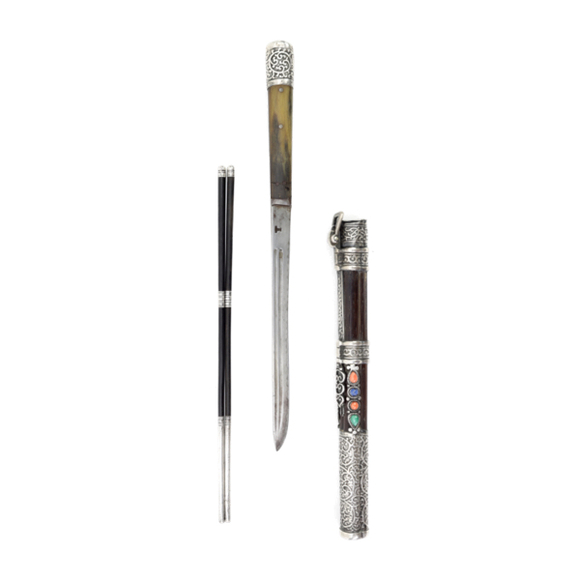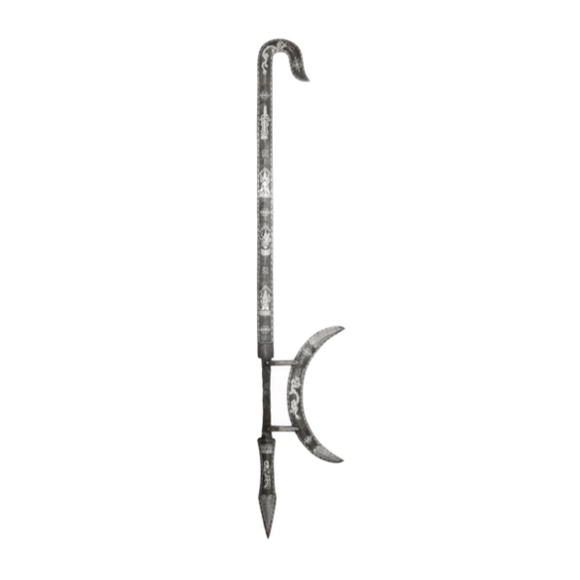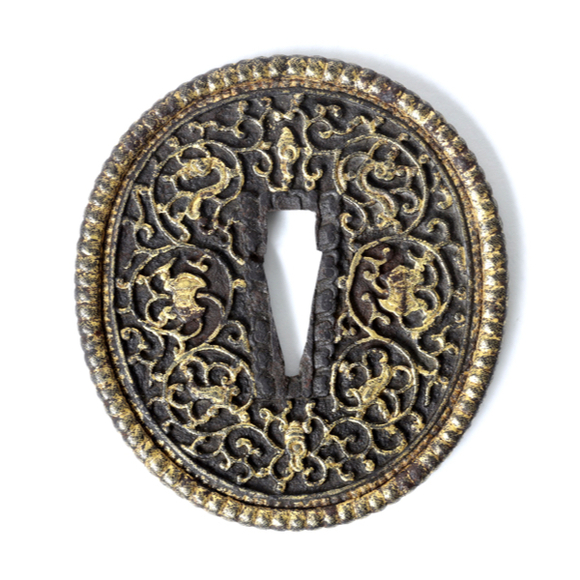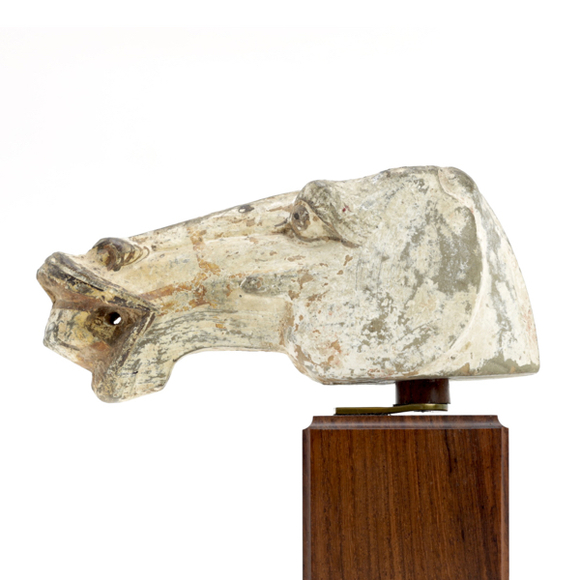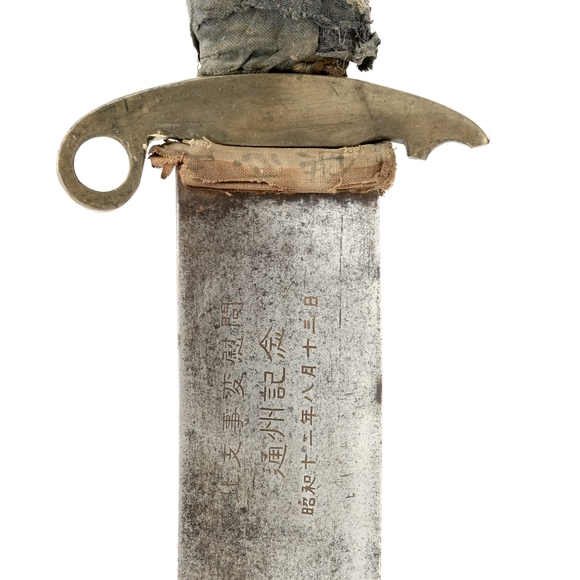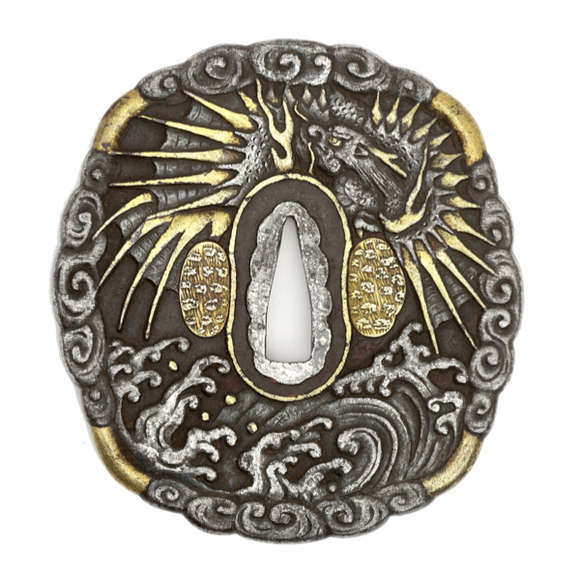Language: Mandarin Chinese
Source: Period text
Description
Miáodāo (苗刀) literally means "sprout saber". Historically, it meant to describe a specific narrow, slightly curved blade type on both single handed and two-handed sabers.1

Two slender, slightly curved sabers that in 1932 were both classified as miáodāo.
Sold by Mandarin Mansion in 2018.
Miáodāo - a long saber?
In today's martial arts circles the word is exclusively associated with a large two-handed saber, and only the top example in the above picture would be recognized as a miáodāo.
Understandibly so, because the single handed narrow saber, also known as the liǔyèdāo (柳葉刀), gradually fell out of use not long after the fall of the Qing. It got replaced by the iconic niúwěidāo (牛尾刀) that is seen in the hands of every martial artist from the 1930s, and so the only narrow saber that remained in use was the long variety.
Long sabers historical sources
Large, two-handed swords are well-documented in China. The idea came from Japanese ōdachi (大太刀) in the hands of pirate armies that raided the coastal areas in the 16th century. Their weapons and tactics were largely based on that of the ronin within their ranks, masterless samurai who had fled civil war-ridden Japan in exchange for a life at sea.
Notable Ming general Qi Jiguang (戚繼光) adopted these sabers into his armies and successfully managed to fight off the pirates. The long saber was to stay in the Chinese arsenal well into the 20th century.
Ubiquitous as long sabers were since the 16th century, the word miáodāo is never mentioned in official period writings of neither Ming or Qing dynasty. During the Ming dynasty the large two handed sabers were usually referred to as dāndāo (單刀), chángdāo (長刀), or wōdāo (倭刀) / wōdāo (窩刀), both meaning "Japanese (style) saber".
By the mid-Qing dynasty, they had evolved in seven distinct types of which five which remained in use until the Jiaqing period (1796-1820).2 By the Guangxu period (1875-1908) the only long saber that remained in use was the wōdāo or "Japanese (style) saber".3
And indeed, even on many long sabers of the Qing dynasty, the Japanese influence is still strong.
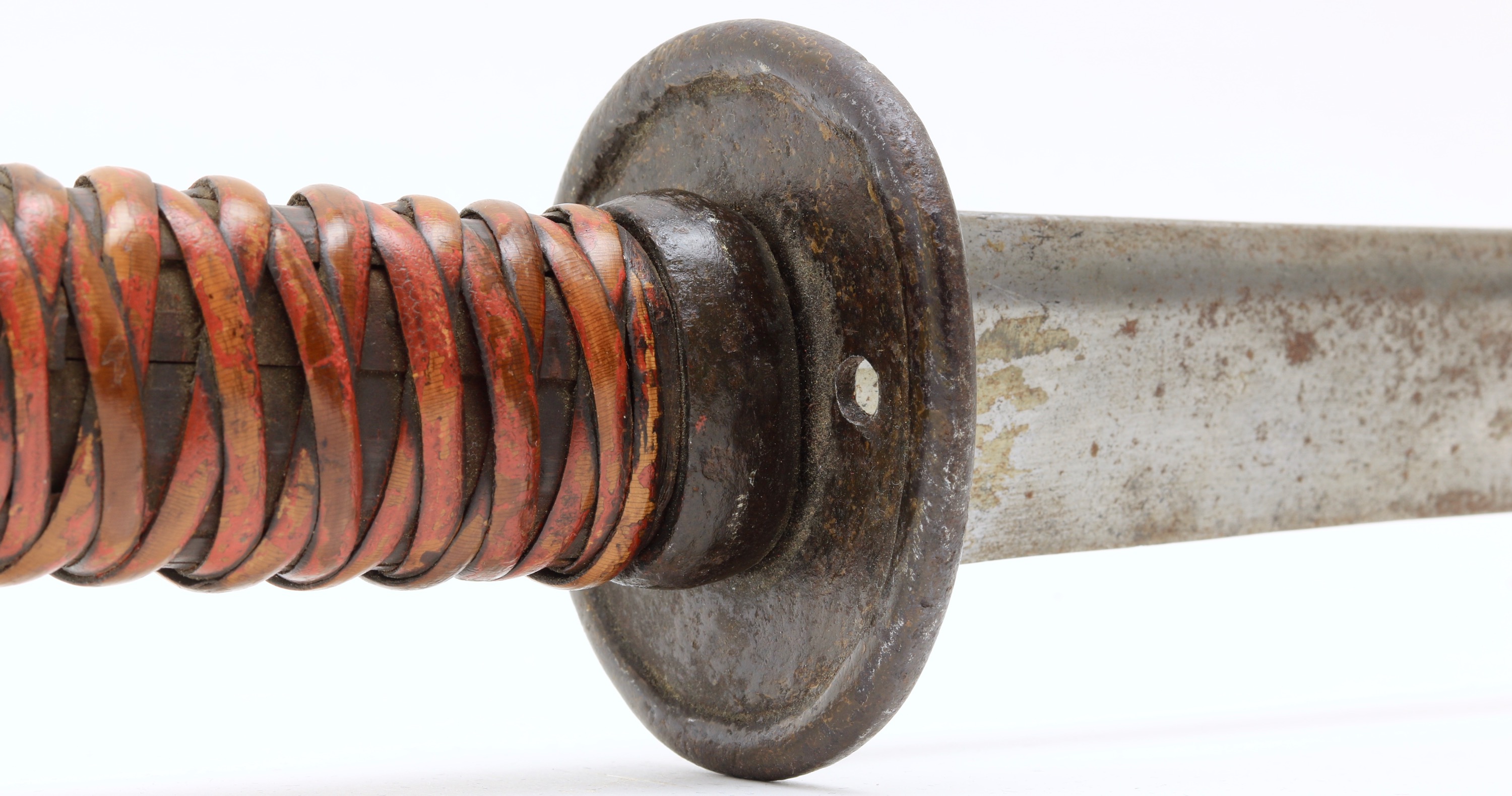
A Qing dynasty long saber with some Japanese design elements.
Author's collection.
The example above still has a number of Japanese features:
-A wrap with crossings, and no center loop.
-Blade with ridged cross-section like the Japanese katana.
-Tsuba-style guard, with even small hole emulating the hitsu-ana on Japanese tsuba.
First mention of the miáodāo
The name miáodāo doesn't appear in writing until after the fall of the Qing dynasty. In fact, the only martial arts text I am aware of that mentions it is the Republican era Dān jiè dāo (單戒刀) or "Single defence saber" by Jīn Yīmíng (金一明) published in 1932.3
He describes a number of dāo including two types of miáodāo:

倭刀(即雙手舞之長苗刀)
Wōdāo (jí shuāng shǒu wǔ zhī cháng miáodāo)
Translated:
"Japanese [style] sword (which is a double handed long miáodāo)"
And:

苗刀(卽單手的苗刀)
Miáo dāo (jí dān shǒu de miáo dāo)
Translated:
"Miáodāo (which is a single handed miáodāo)"
The word miáo in miáodāo referred to the slender and gently curved shape of the blade, which is similar to a rice sprout.

Rice sprouts, and their resemblance to these sabers.
Wōdāo to miáodāo: Why the name change?
So we know from the Guangxu period that the only large saber that remained in widespread state production was the wōdāo (倭刀) or Japanese (style) saber. Official writings use the characters 倭 and 窩, both pronounced wō, depending on the source. Both are a mockery of the Japanese, referring to dwarfs, bandits and bandit lairs. This was quite fun when defeating the Japanese pirates by the hands of patriotic Chinese generals was the last military interaction between the two cultures.
The situation became more grim after the First Sino-Japanese war of 1894-1895, the Japanese partaking in the Battle of Beijing during the Boxer Uprising in 1900, and again rising tensions in the early 1930s that eventually lead to the establishment of a Japanese puppet state in the Manchu homelands of Manchuria. Japanese forces had now developed into a modern, capable, and increasingly agressive and expansive fighting force.
It is understandable that the Chinese, with a renewed interest in their own fighting arts, sought to disassociate their long saber with the Japanese.
Interestingly, this went both ways. Around the same time, the Japanese changed the name of their national fighting art, karate, from 唐手 "Chinese hand" to 空手 "empty hand", sweeping its Chinese origins under the rug.5
So in early Republican period China, miáodāo -referring simply to the blade's shape- became a more politically correct name and ultimately survived into modern times.
A rogue 1750 mention
For the sake of being thorough, I add the following passage.
It is the first mention I could find of a miáodāo. It appears in the novel titled Rúlínwàishǐ (儒林外史) or "Unofficial History of the Scholars"6 It was a satirical work of fiction, completed in 1750 but set in the Ming dynasty that made a mockery of the imperial examination system. The relevant passage:
苗酋率領著豎眼洞的苗兵,帶了苗刀,拿了標鎗,悄悄渡過石柱橋
"The Miao chief led the vicious Miao soldiers, carrying miáodāo, taking javelins, quietly crossing the stone pillar bridge."
Here, I believe the word is used to describe a certain type of Miao minority dāo, and not necessarily a large two-hander as I am unaware of historical accounts of such sabers in use by the Miao people.
Notes
1. Published by New Asia Press, October 1932. With a foreword dating from 1930. The work documents the knowledge of martial arts master Qiū Mínggāo (邱鳴皋) who at the time was heading the Yangzhou Martial Arts Institute. The author, Jīn Yīmíng, was director at the traditional arts museum in Nanjing at the time. A translation was done by Paul Brennan, who kindly made the original text and his translation available here.
2. See my article elsewhere on this website: Chinese long sabers of the Qing dynasty. For the Jiaqing period regulations, see: Tojin (托津) & Cao Zhenyong (曹振镛) (compilers; Dà qīng huì diǎn tú (大清會典圖). Finished in 1818, covering the period of 1758-1818. Chapter 56.
3. Kungang (昆崗) & Xu Tong 徐桐 (compilers); Dà qīng huì diǎn tú (大清會典圖). Finished in 1899, covering the period of 1813-1887. Chapter 101; Military Preparedness 11.
4. Dān jiè dāo (單戒刀) or "Single defence saber" by Jīn Yīmíng (金一明) published by Xīnyà shūdiàn yìnxíng (新亞書店印行) or "New Asia Press". Oct, 1932.
5. Draeger & Smith; Comprehensive Asian Fighting Arts. Kodansha USA, 1981. Page 60.
6. Wú Jìngzǐ (吴敬梓); Rúlínwàishǐ (儒林外史) or "Unofficial History of the Scholars". A classic Chinese novel that was published in 1750.

